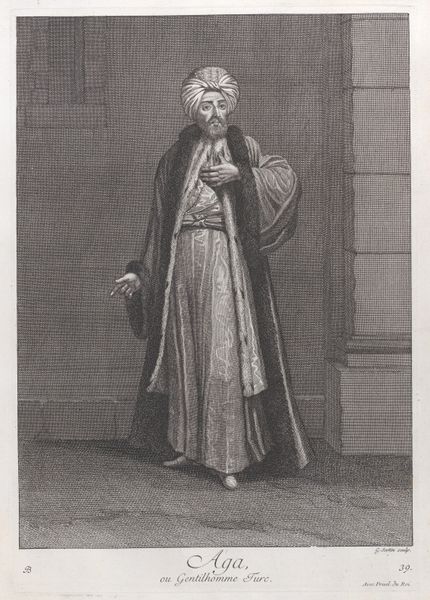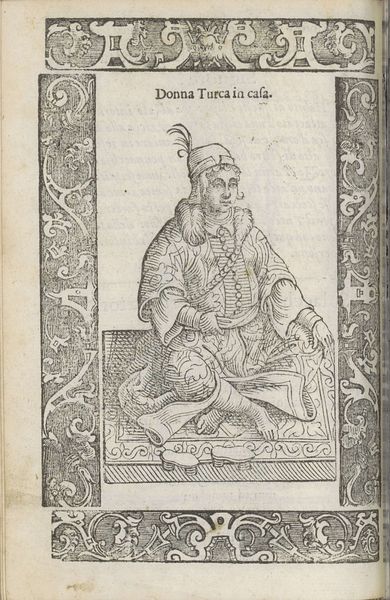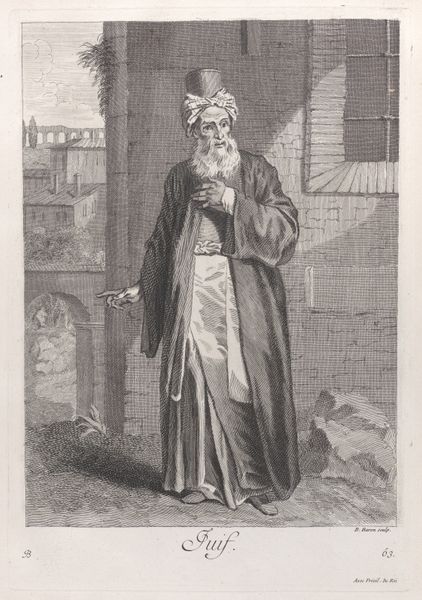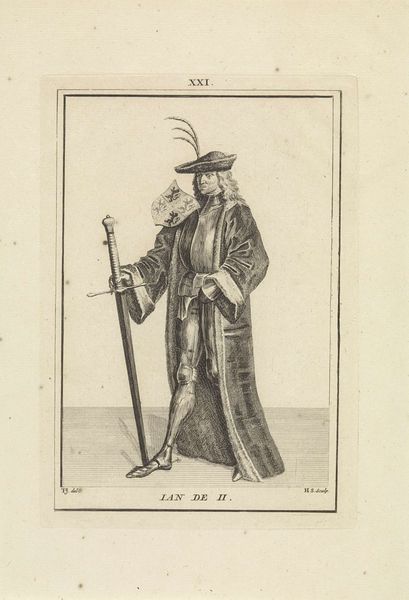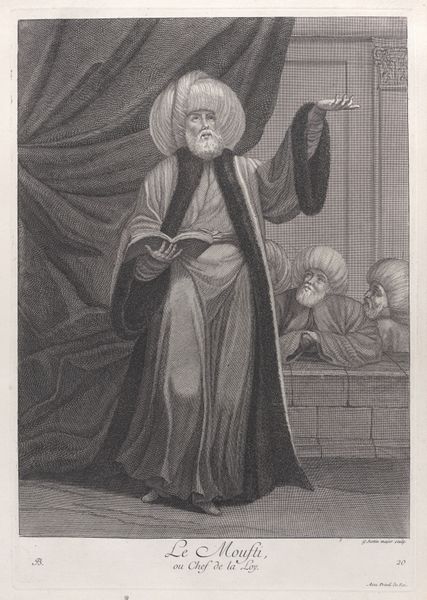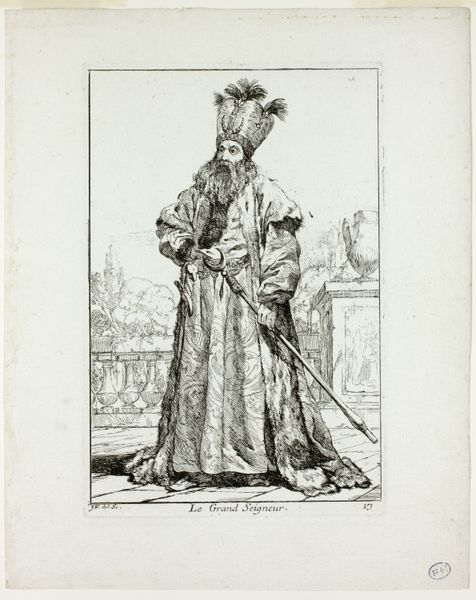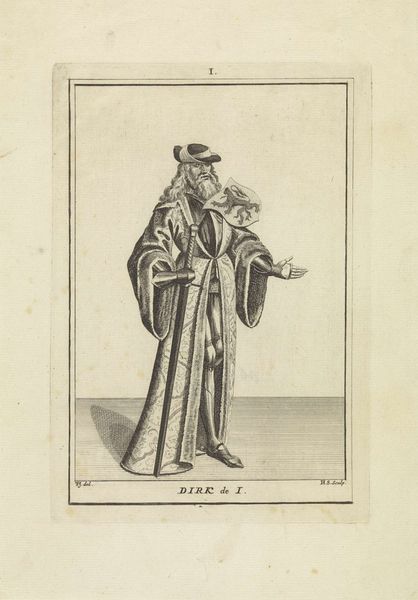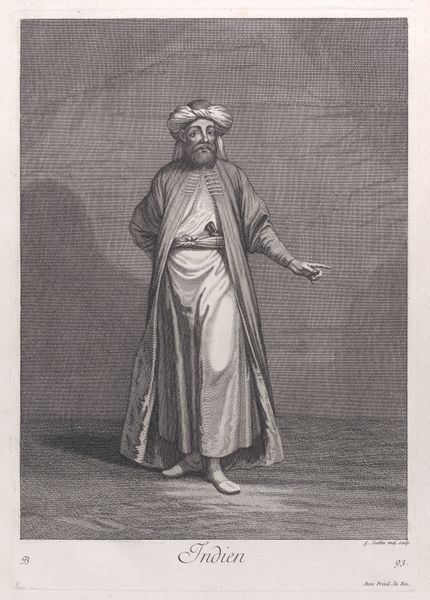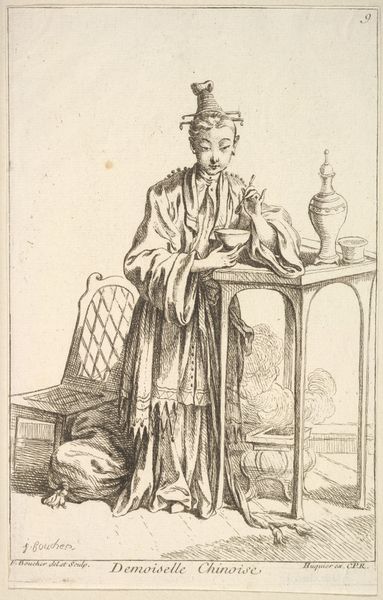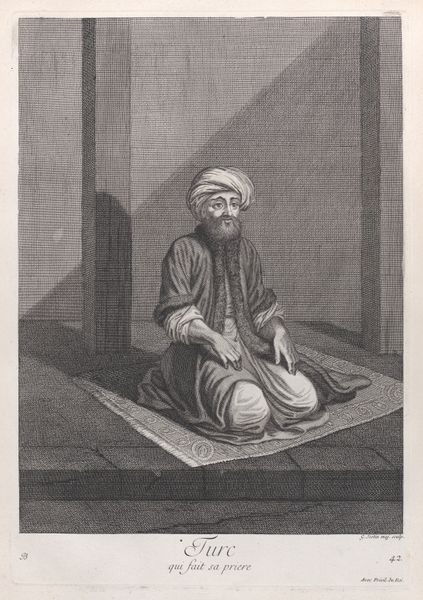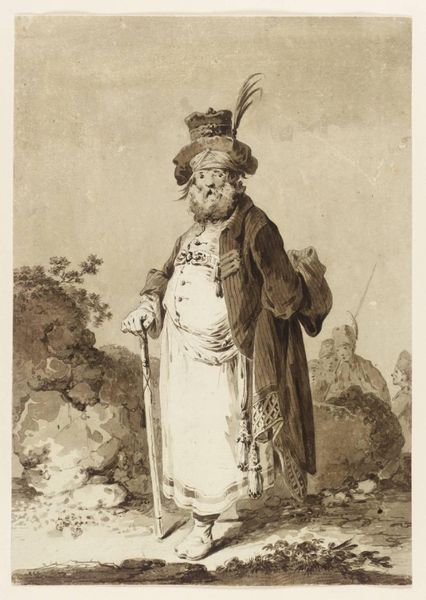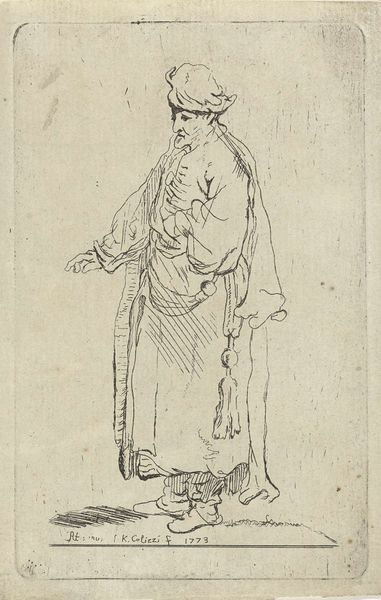
Novi, ou Fille Grecque dans la ceremonie du Mariage, plate 69 from "Recueil de cent estampes représentent differentes nations du Levant" 1714 - 1715
0:00
0:00
drawing, print, engraving
#
portrait
#
drawing
#
baroque
# print
#
orientalism
#
genre-painting
#
engraving
Dimensions: Sheet: 16 7/16 × 12 3/16 in. (41.8 × 31 cm) Plate: 14 3/16 × 9 3/4 in. (36.1 × 24.8 cm)
Copyright: Public Domain
Curator: This is "Novi, ou Fille Grecque dans la ceremonie du Mariage," plate 69 from "Recueil de cent estampes representent differentes nations du Levant." It’s a print made sometime between 1714 and 1715, by Jean Baptiste Vanmour, currently held in the collection of the Metropolitan Museum of Art. Editor: My first impression is one of serenity. The composition, the pose of the girl... there’s an almost unnerving calmness to it. The stark contrast of light and shadow contributes, too, giving a dramatic yet intimate feel. Curator: Vanmour was a key figure in disseminating images of the Ottoman Empire throughout Europe in the 18th century. These prints, published as a collection, offered a visual encyclopedia of the different peoples, customs, and costumes of the Levant. This one, as the title suggests, depicts a Greek girl in a marriage ceremony. Editor: The girl’s headdress immediately draws my attention. Its almost architectural quality speaks to a whole range of cultural symbols related to weddings and what the change of social status means. Consider, too, the object in her hand; it might reveal something special. Curator: These depictions, however, were not simply ethnographic records. They were shaped by European perspectives and the demands of the art market. The "Orient" was often romanticized and exoticized to satisfy European fascination and fantasies. Editor: And you can see that exoticism in the details of the opulent fabrics, but also the window looking to an indeterminate landscape in the distance. It makes you consider the place of women at the time: that dichotomy between the indoor, and perhaps restricted, domestic space versus the world outside. I imagine that this piece would have stirred both interest and perhaps discomfort in European society. Curator: Certainly. It is important to examine these images with a critical eye, recognizing their role in constructing a particular narrative about the East that served European interests and biases. The series offers insights into 18th-century cultural exchange, and the power dynamics inherent in representing other cultures. Editor: Looking closer, what stays with me is how symbolic this work seems, capturing the hopes and anxieties that come with beginnings. Curator: Absolutely, this image represents how the European understanding of the "Orient" continues to develop over time, solidifying certain views along the way.
Comments
No comments
Be the first to comment and join the conversation on the ultimate creative platform.
